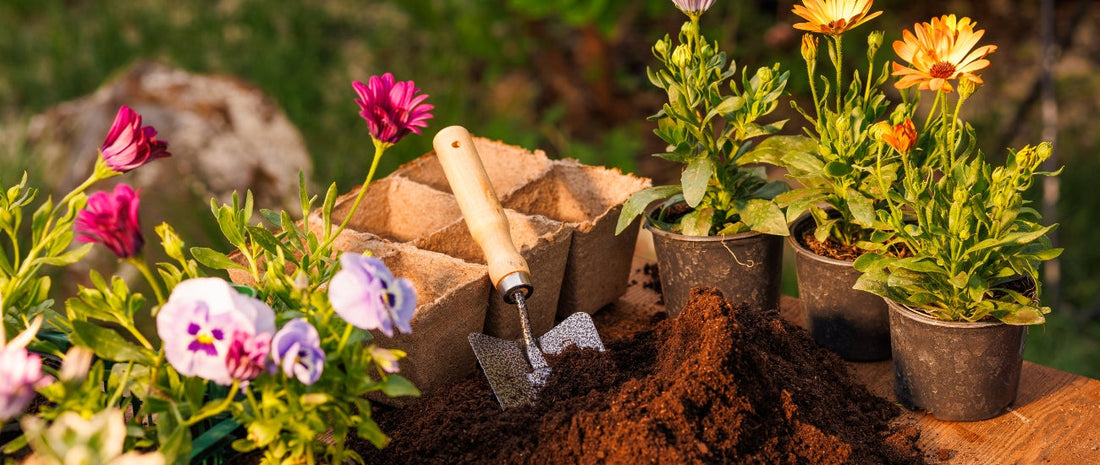Why are my hydrangeas blooming blue in one area of my yard and pink in the other? Believe it or not, the answer has nothing to do with the type of flower or even how much sun it gets. It all comes down to what’s happening right underneath your nose (or your feet, in this case). This is all thanks to the hard work of your soil’s pH.
What is Soil pH?
Let’s start simple: pH is a scale used to measure how acidic or alkaline something is. You’ll see it marked on a scale from 0 to 14.
- 0 to 6.9: Acidic
- 7: Neutral
- 7.1 to 14: Alkaline (also called basic)
Water has a neutral pH of 7. Lemon juice, for example, is very acidic with a low pH, while baking soda is alkaline and has a high pH. Now think about your soil. It works the same way; some soil is more acidic, and some is more alkaline. And that balance can actually change the way some flowers look.

How Does Soil pH Affect Flowers?
Most flowers stay true to their color no matter the soil. A red rose won’t suddenly turn yellow. But some types of flowers are more sensitive to their environment. Their color can shift depending on what’s available in the soil, especially metals like aluminum, which become more or less available depending on pH levels.
Acidic soil (low pH) allows plants to absorb aluminum, which can affect pigments. Alkaline soil (high pH) blocks aluminum, changing the way pigments behave. This is exactly what causes soil pH changing flower color in certain plants. It’s not a trick or illusion like that blue and black dress in 2015; it’s just science at work in your garden.
If you’re looking for flowers that definitely won’t change in color depending on its soil, contact a New York florist for same-day delivery and custom bouquets!

How to Test Soil pH at Home
Curious about your soil pH at home? Here are a few options to test it:
- Use a home soil test kit: These are easily accessible at a garden center or online.
- Try the DIY vinegar & baking soda test:
-
- Take two samples of soil in separate containers.
- Add vinegar to one. If it fizzes, your soil is alkaline.
- Add water to the other, then mix in baking soda. If that fizzes after adding in baking soda, it’s acidic.
It’s not super exact, and it doesn’t make you a full-blown scientist, but it gives you a rough idea of where your soil stands.
Color Changing Superstar: Hydrangeas
We all know and love our color-changing phenomenon, the hydrangea! These big, beautiful flowers can be blue, pink, purple, or even cream or green depending on soil conditions! The secret sauce is…the soil pH! In acidic soil with a pH of 5.2 to 5.5, the hydrangea is blue. In neutral or alkaline soil with a pH of 6.0 to 7.5, the flowers turn pink. If the pH is right in between, landing at a 6, it could be a mix of both blue and pink, making the hydrangea purple.
Hydrangeas absorb aluminum from the soil, but only when the pH is low enough or acidic. Aluminum mixes with natural pigments inside the flower, turning the flower blue. When the pH is higher and the aluminum can’t be absorbed, the flowers turn pink instead. It’s one of the clearest examples of soil pH changing flower color, and the great thing about this is that it’s the perfect experiment to try for yourself at home!

Other Flowers Affected by Soil pH
Hydrangeas are the drama queen and love putting on a show, but they’re not the only ones that react to pH levels. Here are a few others:
- Azaleas: More vibrant in acidic soil
- Morning glories: Color can change depending on soil conditions and sun
- Lilacs: May lean deeper purple in slightly alkaline soil
- Delphiniums: Can show subtle changes in tone depending on the soil makeup
Keep in mind, the color shifts in these flowers are usually way more subtle than in hydrangeas, but they still give you a hint that something’s happening underground.
Changing the Colour of Your Hydrangeas at Home
Want to change your hydrangea’s color? Get rid of those fancy tools first and go back to the basics. This is how to achieve the blue or pink look at home with your hydrangeas.
For blue hydrangeas, your soil needs to be more acidic, around pH 5.2 to 5.5. You can lower the pH by adding aluminum sulfate or mixing in natural materials like coffee grounds, pine needles, or peat moss.
To get pink flowers, try for alkaline soil by adding garden lime. Compost with eggshells or wood ashes can also help raise the pH over time.
If the color changing doesn't work, you might have to check these two things:
- Always test your soil pH before making changes. Color shifts take time, usually a full growing season.
- Working with white hydrangeas? They won’t change color; their genetics are set. So, don’t be discouraged if your hydrangeas are white even after you play around with the soil’s pH.

Not Magic - Science!
So, there you have it! You cracked the code to why hydrangeas are different colors even in the same season, location, and under the same care. It’s not magic, it’s all about pH in your soil. We encourage exploring your soil so dig in and test it, and see what colors your garden can create!

